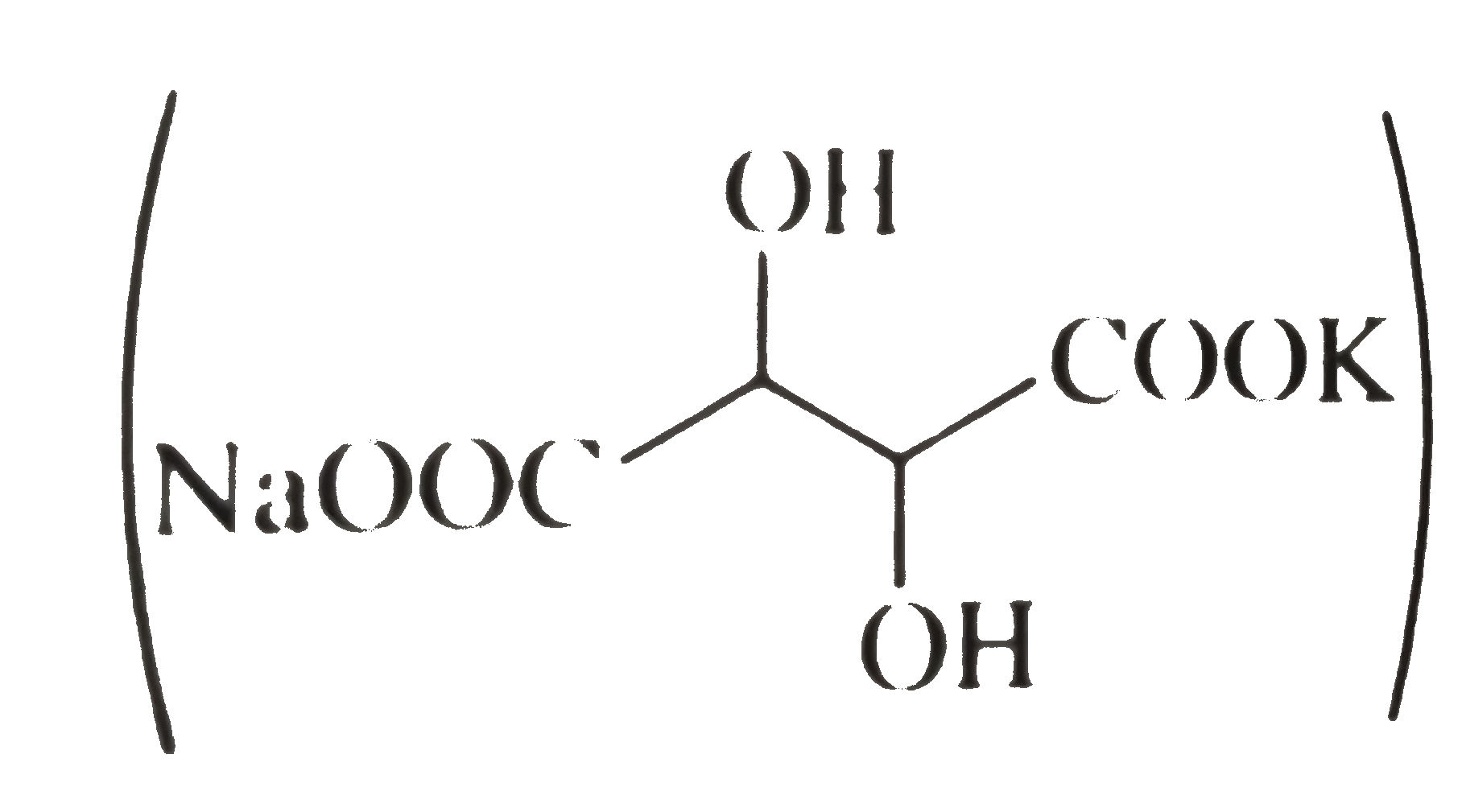Assertion: Ti3+ salts are coloured whereas Ti4+ salts are white. Reason: Ti3+ is less stable than Ti4+
If both Assertion & Reason are true and the reason is the correct explanation of the assertion, then mark (1)
If both Assertion & Reason are true but the reason is not the correct explanation of the assertion, then mark (2)
If Assertion is true statement but Reason is false, then mark (3)
If both Assertion and Reason are false statements, then mark (4)
The correct Answer is:B
To solve the question, we will analyze both the assertion and the reason provided in the statement.
Step 1: Analyze the Assertion
The assertion states that Ti3+ salts are colored while Ti4+ salts are white.
- Explanation: The color of transition metal salts is generally due to the presence of unpaired electrons in their d-orbitals. Transition metals can absorb certain wavelengths of light, and the color observed is the complementary color of the light absorbed.
Step 2: Determine the Electronic Configuration
Now, let's determine the electronic configurations of Ti3+ and Ti4+.
- Titanium (Ti) has the atomic number 22, and its ground state electronic configuration is:
\(
\text{Ti: } (Ar) 3d^2 4s^2
\)
- For Ti3+: Removing three electrons (two from 4s and one from 3d):
\(
\text{Ti}^{3+}: (Ar) 3d^1
\)
This configuration has one unpaired electron.
- For Ti4+: Removing four electrons (two from 4s and two from 3d):
\(
\text{Ti}^{4+}: (Ar) 3d^0
\)
This configuration has no unpaired electrons.
Step 3: Conclusion on Colors
- Since Ti3+ has one unpaired electron, it is colored.
- Since Ti4+ has no unpaired electrons, it is colorless (white).
Step 4: Analyze the Reason
The reason states that Ti3+ is less stable than Ti4+.
- Explanation: The stability of oxidation states in transition metals can be attributed to their ability to achieve a stable electronic configuration. The Ti4+ state is more stable because it achieves a noble gas configuration (octet). The Ti3+ state is less stable due to having an unpaired electron in its d-orbital.
Step 5: Evaluate the Relationship Between Assertion and Reason
- Both the assertion and reason are correct.
- However, the reason provided does not directly explain why Ti3+ salts are colored and Ti4+ salts are white. The color is due to the presence of unpaired electrons, not merely the stability of the oxidation states.
Final Answer
The correct option is:
- Both assertion and reason are correct, but the reason is not the correct explanation of the assertion.
The assertion states that Ti3+ salts are colored while Ti4+ salts are white.
Now, let's determine the electronic configurations of Ti3+ and Ti4+.
\(
\text{Ti: } (Ar) 3d^2 4s^2
\)
\(
\text{Ti}^{3+}: (Ar) 3d^1
\)
This configuration has one unpaired electron.
\(
\text{Ti}^{4+}: (Ar) 3d^0
\)
This configuration has no unpaired electrons.
- Since Ti3+ has one unpaired electron, it is colored.
- Since Ti4+ has no unpaired electrons, it is colorless (white).
The reason states that Ti3+ is less stable than Ti4+.
- Both the assertion and reason are correct.
- However, the reason provided does not directly explain why Ti3+ salts are colored and Ti4+ salts are white. The color is due to the presence of unpaired electrons, not merely the stability of the oxidation states.
The correct option is:
- Both assertion and reason are correct, but the reason is not the correct explanation of the assertion.
Topper's Solved these Questions
- ALCOHOLS, PHENOLS AND ETHERSBOOK - AAKASH INSTITUTE ENGLISHCHAPTER - ALCOHOLS, PHENOLS AND ETHERSEXERCISE - Try yourself
5 Videos
- ALCOHOLS, PHENOLS AND ETHERSBOOK - AAKASH INSTITUTE ENGLISHCHAPTER - ALCOHOLS, PHENOLS AND ETHERSEXERCISE - Exercise
40 Videos
- ALCOHOLS, PHENOLS AND ETHERS BOOK - AAKASH INSTITUTE ENGLISHCHAPTER - ALCOHOLS, PHENOLS AND ETHERS EXERCISE - Try Yourself
5 Videos
Similar Questions
Knowledge Check
Assertion: Bone has very hard matrix whereas cartilage has pliable matrix.
Reason: Bone has calcium salts in its matrix whereas cartilage has chondroitin salts in its matrix.AIf both assertion and reason are ture and reason is the corect explanation of assertionBIf both assertion and reason are ture but reson is not the correct explanation of assertionCIf assertion is true reason is falseDIf both assertion and reason are false
Assertion: H2SO4 is a weaker acid than HClO4.
Reason: SO2−4 is more stable than ClO−4 in solution.
View SolutionAssertion (A) : Rochelle's salt is used as a complexing agent in Tollens reagent.
Reason (R). Sodium potassium salt of tartaric acid is known as Rochelle's salt. The IUPAC name of Rochelle's salt is sodium potassium-2,3-dihydroxy butance-1,4- diote.

View SolutionWhy Ti+4 complex are diamagnetic?
View SolutionAssertion :Ti can be purified by Van Arkel process.
Reason: TiI4 is a volatile compound which decomposes at a high temperature.
View SolutionAssertion: [Ti(H2O)6]4+ is coloured while [Sc(H2O)6]3+ is colourless.
Reason: d-d transition is not possible in [Sc(H2O)6]3+.
View SolutionAssertion: Cu2+(aq) is less than Cu3+(aq) but Fe3+ is more stable than Fe2+(aq)
Reason : Half filled and completely filled subshells are more stable
View SolutionThese questions consist of two statements each, printed as Assertion and Reason. While answering these questions you are required to choose any one of the following four responses:
Assertion: [Ti(H2O)6]3+ is coloured while [Sc(H2O)6]3+ is colourless.
Reason: d-d transition is not possible in [Sc(H2O)6]3+.
View Solution

